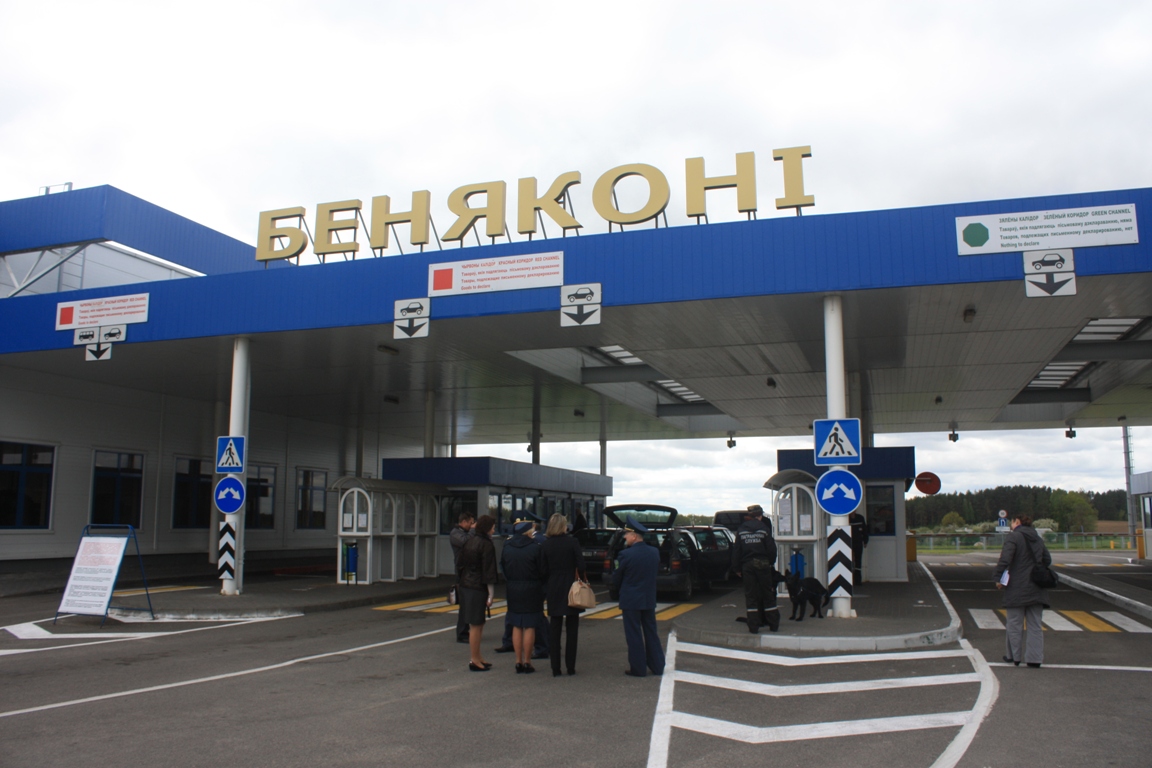Hi guys 
Actually, as a regular OSM contributor and a maps.me and OsmAnd user, I do agree on the fact we should use those “hgv”, “motorcar”, “motorcycle”, “bus” tags.
I also agree that the road classification of each lane should be the same (unless, of course, it is a lane leading towards a Duty Free or towards toilets, for instance.)
However, there is one thing I do not agree with: the absence of names!
Those “barrier=border control” tags should systematically have names. Why?
Sure you can play with the tags I mentioned above when it comes to bus lanes, truck lanes etc. Those tags are extremely important (and not always filled) for your GPS to lead you through the lane corresponding to your vehicle while transiting.
However, this won’t help in any way to plan your trip to a specific spot on the border checkpoint. Even worse: it won’t help you differentiate a couple of lanes with criteria that do not exist on access tags on OSM.
For instance:
- Entering the EU, you’ve got “EU, EEA, CH lanes” and “all passports lanes”, all differentiated additionally by “nothing to declare” and “goods to declare”. Example below at the Lavoriškės (Lithuania) border checkpoint:

- Entering Belarus, you’ve got those “Green channel” (for Russian Customs Union cars) and “Red Channel” (for cars from other countries). Example from the Bieniakoni border checkpoint below:

When you do differentiate clearly “green channel, red channel, all passports …”, it helps people to choose the right lane. Even better: it helps them planify their journey to that specific border checkpoint. Especially given the fact sometimes that info is so badly signed you need a microscope to understand where you need to go (those who tried the Lithuanian Medininkai and Šalčininkai border checkpoints know what I’m talking about) 
Names are even more important if we take in account the fact that some border checkpoints’ names totally differ from the city/town/village they are on.
Ex.:
- Before the Schengen era, Poland had the “Ogrodniki” border checkpoint with Lithuania, which was not situated in the eponymous village, but in the village of Hołny Mejera. If you added no name, your GPS wouldn’t find that checkpoint. Just a couple of villages called “Ogrodniki”. Same at a couple of (former) border checkpoints around: Kalvarija in Lithuania, etc. I could find lots of such examples.
- A couple of years ago, the nowadays’ Brest border checkpoint was called “Varšaŭski most” (someone recently unnecessarily reverted that name). If there were no name, it would be impossible to find that border checkpoint because there is no locality called “Varšaŭski most”.
- Additionally, if I didn’t have any look at the Belarusian border committee’s website, I would have no clue that the above mentioned “Brest” border checkpoint is only for cars and for buses, whereas the nearby Kazłovičy border checkpoint is only for trucks. When you drive to Brest, it is indicated nowhere early enough to make you change your decision on-time.
- You’ve also got a lot of border checkpoints for “local traffic only” or “only for citizens of country A and country B”. If you don’t include that in the info, there is no way your GPS will ask you “do you live in that area?” or “are you a citizen of country A or country B” before you plan your journey.

For all the reasons above, despite aesthetically it doesn’t always look good, including names+additional info is essential while mapping those border checkpoints. If you add no name including an additional info to the “barrier:border control” tag, forget that people will understand why they can’t drive through. They will be clicking like crazy “why can’t I drive there if I have a car?”
We are lucky enough to work on an open-source map. This means we can discuss the rules between ourselves and change them. OSM is not a rule museum!  And most importantly: we must also bear in mind that lots of apps use OSM as their source, which means we must always be much more user-oriented than map-freak-oriented while mapping.
And most importantly: we must also bear in mind that lots of apps use OSM as their source, which means we must always be much more user-oriented than map-freak-oriented while mapping.  If we provide insufficient or wrong info, that info is automatically reflected on all those apps.
If we provide insufficient or wrong info, that info is automatically reflected on all those apps.



